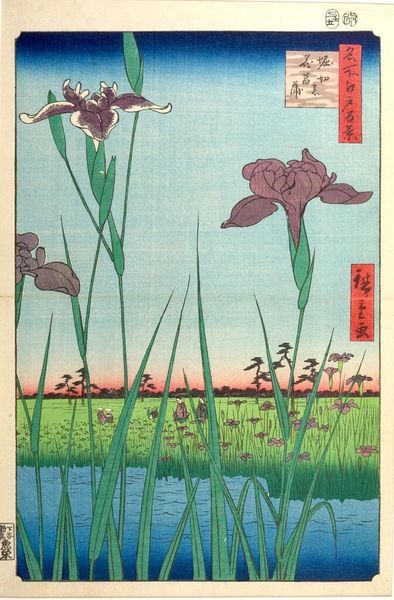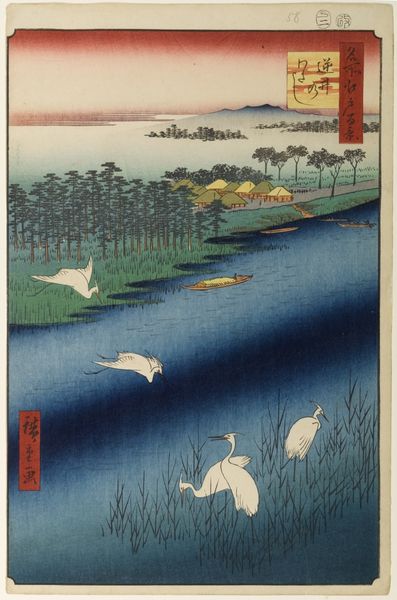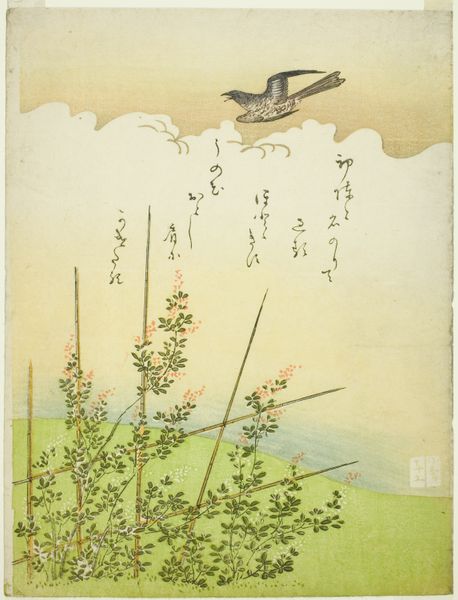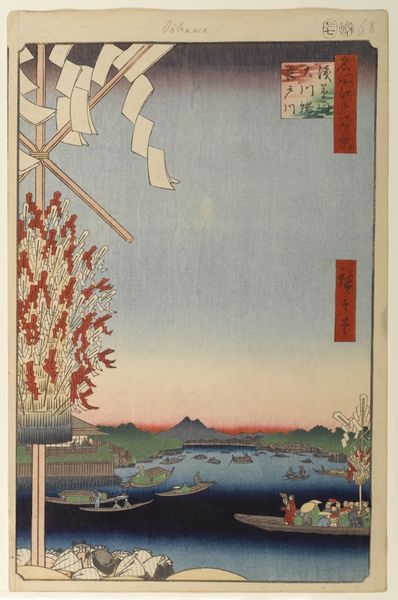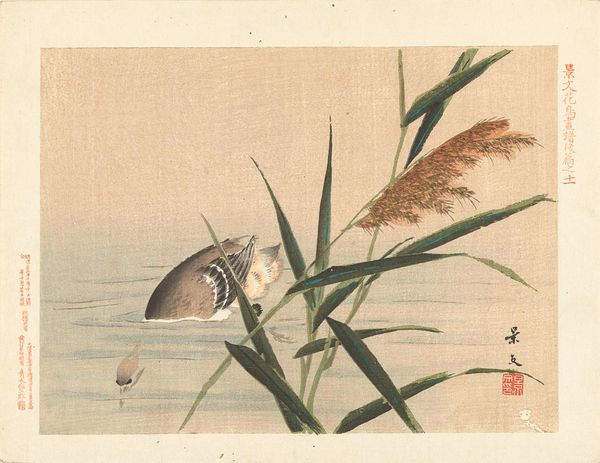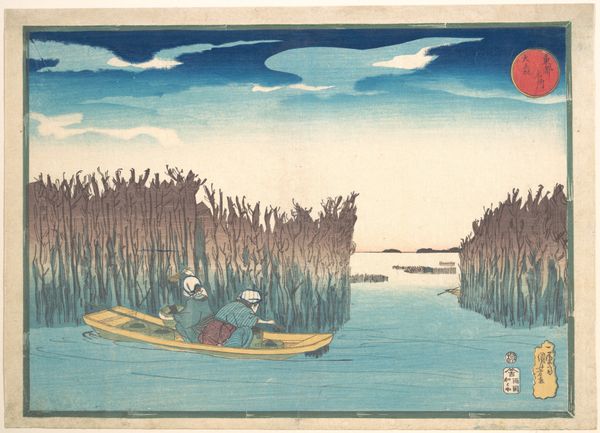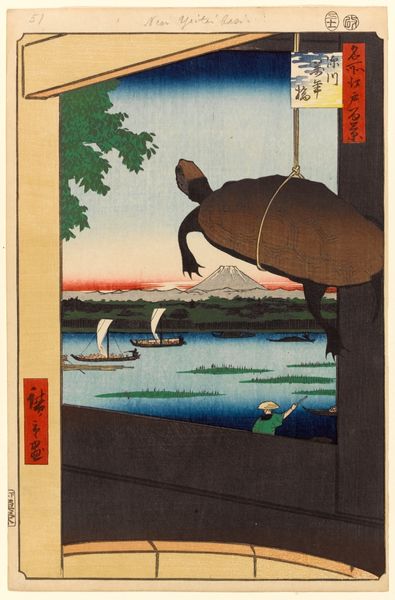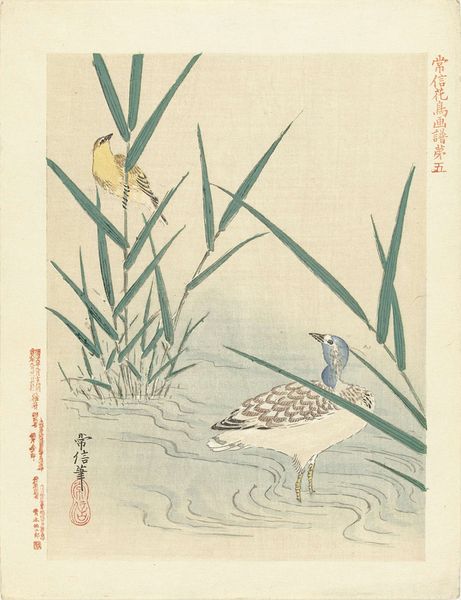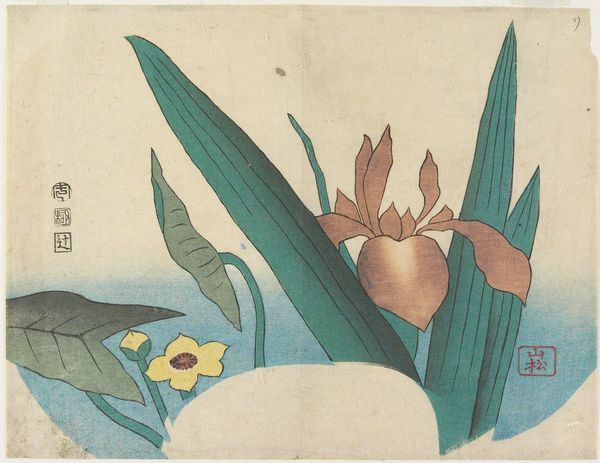
Dimensions: height 370 mm, width 249 mm
Copyright: Rijks Museum: Open Domain
Editor: This is "Irissen in Horikiri," a woodblock print made by Utagawa Hiroshige in 1857. The irises loom so large in the foreground, it almost feels like you're wading through the marsh with them. What strikes you about this work? Curator: What immediately grabs my attention are the vertical lines—the irises and reeds piercing upwards—against the horizontal landscape. Consider what those reaching irises might signify in the collective consciousness of 19th-century Japan. Think about the iris's association with the Tango no Sekku festival, a celebration of boys and their aspirations. Do you see how the flowers' strength, mirrored in the young boys, can connect the viewer with notions of vitality and protection? Editor: That's fascinating! I was so focused on the visual aspect I didn't consider its cultural symbolism. So the irises are more than just beautiful flowers; they’re cultural totems. Curator: Exactly! Note the bold colours typical of ukiyo-e, how they lock this scene in cultural memory. The horizon almost feels dreamlike in contrast. Tell me, what feelings are conjured by the background figures seemingly dissolving in the distance? Editor: There’s definitely a feeling of nostalgia, or perhaps of looking back at something fleeting and ephemeral. It’s beautiful and a little sad. Curator: Yes, it holds a beautiful tension, doesn’t it? It merges cultural symbols with universal feelings, making something specific yet universally resonant. Editor: I never thought of ukiyo-e prints carrying so much cultural and personal weight, it is something I will consider when seeing artwork from other cultures. Curator: Indeed. Recognizing symbols reveals layers, and lets us connect with art in a much richer way.
Comments
No comments
Be the first to comment and join the conversation on the ultimate creative platform.


